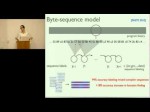
Network Marketing System lucienbechard.com Finding the right network marketing system is the key to success when marketing online. Unfortunately many people choose the wrong system and never find any success. The key is to partner with a system that’s lead by the top income earners in the industry and copy the exact strategies they are using to have success. Click the link above to find out what system these leaders are using. Every month tens of thousands of people invest their hard-earned money to join a “network marketing system” or company with the hope of earning a few extra dollars working part-time from the comfort of their home. By the end of their third month in business, 70% or more pull the plug and quit; often in worse financial shape than when they started. This has become the typical norm. It doesn’t have to be like that. There’s just one thing between enjoying success with network marketing or failing like those other 70 percent, and that’s the use of an easy {network marketing system} that will do almost all of the difficult work for you and your downline. Systems and Tools are Two Different Things: Many new network marketing business owners confuse tools with systems, and this may be a costly mistake. They think that tools are a marketing system, but that just isn’t true. A good [network marketing system] will employ several different tools, but any tool will be pointless unless it is a component of a totally integrated series of processes that are …





